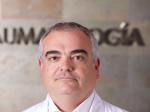What is Scoliosis
The spine is made up of many individual bones called vertebrae, the vertebral column presents several curves viewed laterally. When looking at the spinal column from the back (posterior aspect), it should be perfectly straight.
A scoliosis is a lateral or sideways curve in the spine with a rotation of the vertebrae that causes a C-shaped or S-Shaped instead of being straight shaped.
Due to these abnormal curves of the spine and rotation of the vertebrae may appear one shoulder higher than the other, an asymmetry in the waist, or prominence on the back, (hypo-kyphosis)
¿What Causes Scoliosis?
Scoliosis is a term that describes the curve of the spine and not a diagnosis that includes the cause. Scoliosis affects 2% of the population and is associated in families, if someone in your family has scoliosis, the likelihood that another member of the family will suffer it is higher (up to 20%).
Most of them are idiopathic scoliosis (80%), this means that the cause is unknown and most of them appear in adolescence, from age 10. Congenital malformations of the spine, neurological, genetic and other causes can lead to scoliosis.
Scoliosis does not appear from loading weights, practicing sports, for positions in sleep or by small differences in leg length, and it occurs equally in boys and girls, girls are often more prone to scoliosis, requiring treatment.
¿ What are the symptoms and signs of scoliosis?
The most common symptom of scoliosis is an abnormal curve of the spine. Often this is a mild change and may be first noticed by a friend or family member. The change in the curve of the spine typically occurs very slowly so it is easy to miss until it becomes more severe. It can also be found on a routine school screening examination for scoliosis. Those affected may notice that their clothes do not fit as they did previously or that pant legs are longer on one side that the other.
Scoliosis may cause the head to appear off center or one hip or shoulder to be higher than the opposite side. You may have a more obvious curve on one side of the rib cage on your back from twisting of the vertebrae and ribs. If the scoliosis is more severe, it can make it more difficult for the heart and lungs to work properly. This can cause shortness of breath and chest pain.
In most cases, scoliosis is not painful, but there are certain types of scoliosis than can cause back pain. Additionally, there are other causes of back pain, which your doctor will want to look for as well.
How is scoliosis diagnosed?
Idiopathic scoliosis can go unnoticed in a child because it is rarely painful in the formative years. Parents should be checked if the child has one shoulder that is higher than the other or differences in the shoulders. The child's waist or tilting to one side..
Your pediatrician or doctor will check your child for birth defects, sking spots, neurological diseases, differences in the shape of the shoulders or hips and waist asymmetry in the trunk or legs. Then it will ask the patient to bend forward with straight legs (test ADAM). Confirmed by x-column. The doctor will measure the x-ray ranks and the type of curve.
Treatment of idiopathic scoliosis
The choice of technique depends on the maturity of the child (not chronologic), curve magnitude and location and potential for progression. Curves in the thoracic region are more likely to worsen, than curves in the thoracolumbar or lumbar regions.
The types of treatment are:
Children with minor curves (less than 20-25 degrees) the doctor will order regular x-rays for them—every 4 to 6 months—. Curves up to 45 degrees when you're finished growth also need to be reviewed every six months. The doctor will look for the progression of a sideways curve.
Bracing: Scoliotic curves between 25 and 45 degrees in growing children. The goal of bracing is to prevent further progression of the curve while growth of the spine remains (it is effective in 90% of cases). Bracing manages to reduce the magnitude of scoliosis in some degrees. If your doctor has said that the brace must be worn, it can not be taken off. You can still play sports , it is recommended in order to maintain muscle tone, after exercise, the brace should be put back on. The brace treatment lasts only while the child is growing and there is a risk of aggravation of scoliosis.
Surgery: It is recomended, when the curve is up to 45 degrees. If it reaches the final stage of growth with these curves scoliosis can worsen during adulthood. When the thoracic curve exceeds 70 degrees it can cause cardiac or respiratory problems, especially when the scoliosis began before age 9. The goals of surgery are to prevent progression of scoliosis and deformity correction. The most commonly used method in idiopathic scoliosis is -arthrodesis (Spinal Fusion) with instrumentation (fixation of the vertebrae with metal instruments) and bone graft to facilitate fusion of the vertebrae.
There is no scientific evidence to suggest exercise, massage, or electrical stimulation in the treatment of idiopathic scoliosis.


